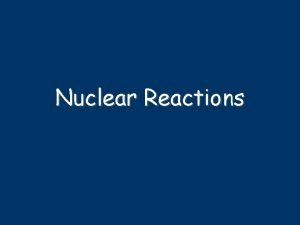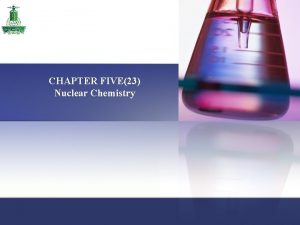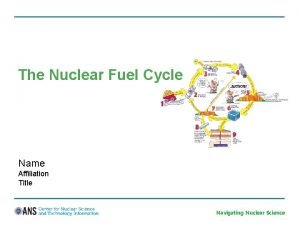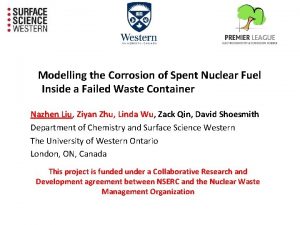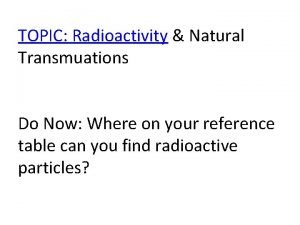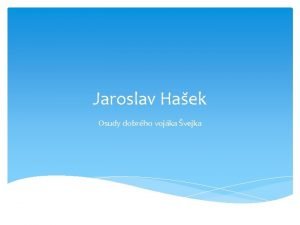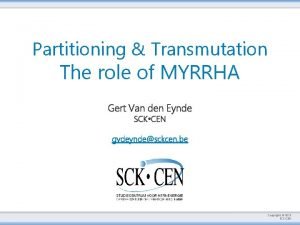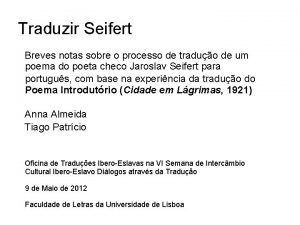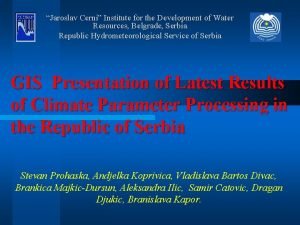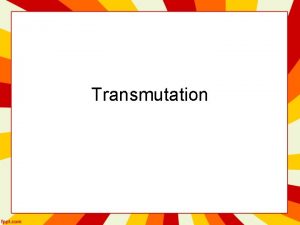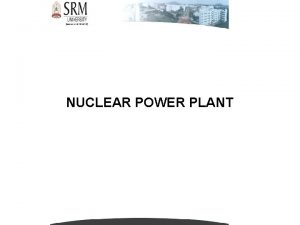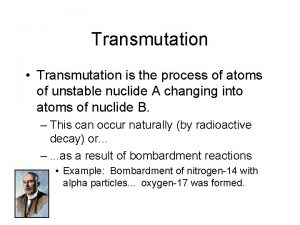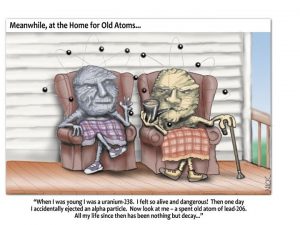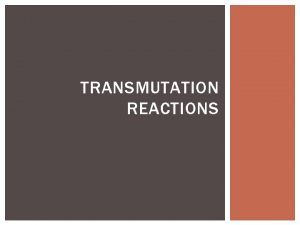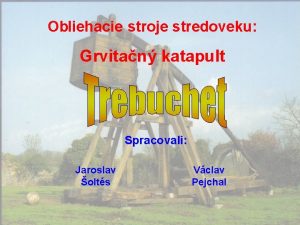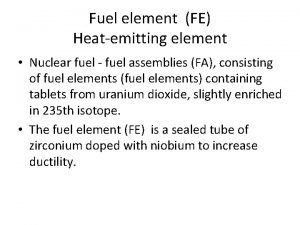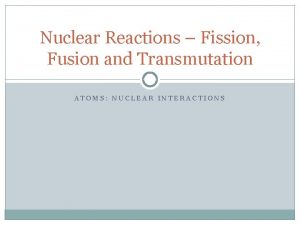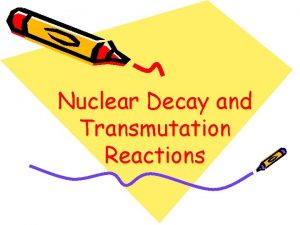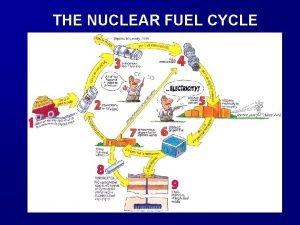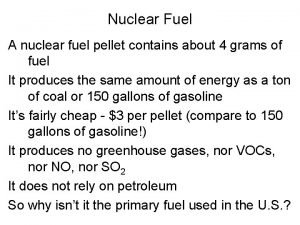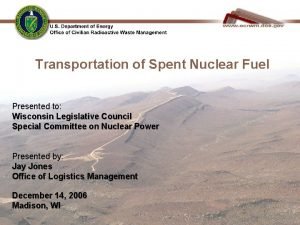Transmutation of spent nuclear fuel Jaroslav olts 1










![Detected nuclei count 60000000 sample Th-11 sample Th-12 Detected nuclei in target [-] 50000000 Detected nuclei count 60000000 sample Th-11 sample Th-12 Detected nuclei in target [-] 50000000](https://slidetodoc.com/presentation_image_h/c141e8034586245389d0cdba5f2d3b12/image-11.jpg)


- Slides: 13

Transmutation of spent nuclear fuel Jaroslav Šoltés 1 Jiří Skalička 2 1 – Czech Technical University, Prague 2 – Brno University of Technology 3 – Joint Institute of Nuclear Research, Dubna Supervisor: Lukáš Závorka 3

Main goals of transmutation • Burnup of minor actinides in spent nuclear fuel to reduce its radioactivity (Am, Cm) • Converting fertile isotopes to fissile isotopes (232 Th, 238 U)

Accelarator driven systems • High energy and intensive neutron source is needed • They cannot be obtained via standard thermal or fast fission in a reactor • Spallation reactions are required which can be achieved only by using an accelerator driven system (ADS)

Accelerator driven systems

Neutron reactions in the ADS core • Fission of heavy nuclei (Am, Cm, U, Th, Pu) • Neutron capture on Th, U and fissile isotopes creation • (n, xn) on Th creating additional neutrons

QUINTA experiment

HPGe γ - spectrometer Ortec

Measurements carried out • Time of irradiation: 16 h • Number of measurements: 8 • Measured 2 h, 3 h, 11 h, 28 h, 36 h, 50 h, 45 d and 105 d after irradiation

Samples evaluation • Identification of dominant gamma peaks in spectra • Energy calibration • Non-linearity correction • Background correction • Single escape and double escape peak correction • Effectivity calibration correction • Isotopes identification

Identified isotopes • Fission products: 85 m. Kr, 85 m. Sr, 85 m. Y, 87 Kr, 88 Rb, 90 m. Y, 91 Sr, 92 Y, 93 Y, 95 Nb, 95 m. Tc, 96 Nb, 97 Zr, 99 Mo, 103 Ru, 105 Rh, 123 I, 127 Cs, 127 Sb, 128 Sb, 131 Ba, 131 I, 132 Cs, 132 I, 132 Te, 133 I, 134 I, 135 Xe, 138 Cs, 139 Ba, 139 Ce, 140 Ba, 140 La, 141 Ce, 142 La, 143 Ce • Decay products of (n, xn) reactions isotopes: 210 Po, 210 m. Bi, 213 Bi, 214 Pb, 219 Rn, 223 Ra, 224 Ac, 226 Ra, 227 Ac, 230 Th • Activation product of 232 Th: 233 Pa
![Detected nuclei count 60000000 sample Th11 sample Th12 Detected nuclei in target 50000000 Detected nuclei count 60000000 sample Th-11 sample Th-12 Detected nuclei in target [-] 50000000](https://slidetodoc.com/presentation_image_h/c141e8034586245389d0cdba5f2d3b12/image-11.jpg)
Detected nuclei count 60000000 sample Th-11 sample Th-12 Detected nuclei in target [-] 50000000 Nuclei count: 40000000 232 Th-11: 3, 52*1020 232 Th-12: 3, 64*1020 233 Pa-11: 7, 72*108 233 Pa-12: 4, 46*108 30000000 20000000 10000000 0 80 90 100 110 Isotope mass number [-] 120 130 140

Conclusion • Detected fission products indicate fast neutron fission of the target 232 Th • Detected isotopes of 233 Pa which betadecays into 233 U show effective fissile fuel breeding possibilities ADS • (n, xn) reactions are important additional source to neutron balance • 232 Th is therefore ideal candidate for the ADS breeding zone

Thank you for your attention soltes. jaro@gmail. com jiri. skalicka@gmail. com
 Natural transmutation
Natural transmutation Determine each nuclear transmutation : 55fe → 55mn
Determine each nuclear transmutation : 55fe → 55mn Artificial transmutation worksheet
Artificial transmutation worksheet Nuclear fuel rods
Nuclear fuel rods Nuclear fuel
Nuclear fuel Fisión nuclear vs fision nuclear
Fisión nuclear vs fision nuclear Lesson 15 nuclear quest nuclear reactions
Lesson 15 nuclear quest nuclear reactions Unstable nucleus
Unstable nucleus Jaroslav hašek prezentace
Jaroslav hašek prezentace Myrrha transmutation
Myrrha transmutation Jaroslav duba
Jaroslav duba Jaroslav seifert poemas
Jaroslav seifert poemas Jcerni
Jcerni Spontaneous transmutation equation
Spontaneous transmutation equation
